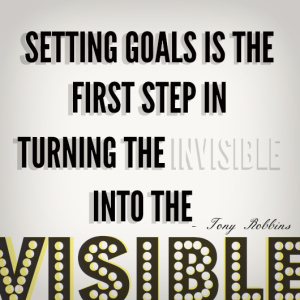Goal Setting: Why it Matters
Almost all successful people attribute their success to practiced goal setting in their personal and professional lives. However, the practice of goal setting is rarely taught in educational institutions. Research shows that when appropriate goals are set, students take a more active role in the learning process. Furthermore, they become more likely to develop a continuous interest in the world around them, creating lifelong learners. Every child is awarded the ability to live a happy, successful life, but oftentimes, specific direction and support are required to make this a reality. The beginning of the school year, and October is still the beginning, is the perfect time to set this in motion.
Along these same lines, several teachers have asked me how to inspire students who want nothing to do with school. While this is no easy task, there are a few basic steps that can impact student motivation rather quickly, one of which is goal setting.
The first and most important step is connecting with that student, building an authentic relationship, understanding why the student is unmotivated, uninterested, or uninspired, and finding common ground—something to discuss that is non-school related.
The second step is setting a goal with that student. This demonstrates that you care about the student as an individual, you are willing to invest your time and effort to help him/her reach that goal, that you have high expectations and will not lower the bar, but rather, provide the assistance needed to help that student grow into the person who can reach the lofty goal. Yes, this requires significant time and effort on the teacher’s part, but isn’t helping students achieve success the ultimate goal for every teacher? Why did you go into education? I hope you don’t say “for the summer breaks,” because if that’s the case, you have a long career ahead of you. Establish weekly or bi-weekly goal check-ins with your students to measure growth and provide the tools and resources needed to assist them in overcoming obstacles at various points in their paths to achievement.
It’s important to note that the greatest outcome is achieved when students have a role in setting the goals, which provides them with a sense of ownership and accountability toward the goal. Don’t set goals for your students, rather, set goals with them. Challenge their goals when you know they can do better, advise against goals that are too far out of reach as these will result infrustration and perpetuate the fixed mindset mentality. The best way to do this is to set SMART goals so that students can achieve them with pride in their accomplishments. By setting SMART goals, students can improve their academic performance, increase their motivation to learn, increase their pride in their performance, and improve their self-confidence. Honestly, who doesn’t want to do this?!
Lastly, be sure to set your own goals. I’ve noticed dramatic differences in my personal and professional life after adopting a strict goal setting practice. Now, I rarely do anything without setting a goal. I have goals for my marriage, for organizing my home, for my fitness, for my doctoral studies, for my budget, for my coaching, and for many more categories of my life. And remember:



